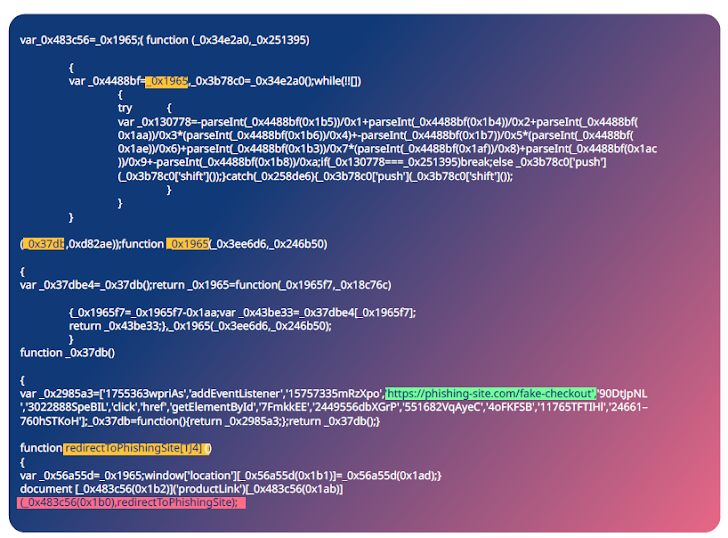Introduction
In the dynamic landscape of online retail, security breaches pose significant risks to both businesses and their customers. One of the more insidious threats is the “evil twin” checkout page—an expertly crafted counterfeit that aims to steal sensitive payment information. This case study explores a recent incident involving a global online retailer and how an innovative web security solution effectively thwarted an impending disaster.
Understanding the Evil Twin Threat
When discussing cybersecurity threats in online shopping, the term “evil twin” refers to a malicious clone of a legitimate checkout page. These pages can trick unsuspecting shoppers into entering their financial information, leading to potential identity theft and financial loss. The seamlessness of these attacks relies on user behavior; many customers, eager to complete their purchases, often fail to scrutinize the checkout process thoroughly.
The Mechanism of the Attack
The attack typically initiates from a legitimate website. Cybercriminals employ a malicious redirect, guiding users to a fraudulent page that mirrors the authentic site’s design. The sophistication of these evil twin pages can make them nearly indistinguishable from the original, heightening the risk of users falling victim to the scam.
A key tactic used in these attacks is typosquatting. This involves registering domain names that closely resemble legitimate URLs, but with minor alterations. For example, a legitimate site might be “fabulousclothingstore.com,” while the fraudulent version could be “fabulousclothingstre.com.” Such subtle differences are often overlooked by hurried shoppers, who may not notice the missing character.
The Data Heist
Once a user is lured onto the fake checkout page, they may unwittingly provide sensitive financial data—credit card numbers, billing addresses, and more. This stolen information can then be exploited for fraudulent purchases or sold on dark web marketplaces, leading to substantial financial repercussions for victims.
Infection Vectors: How Websites Get Compromised
While specific infection methods can vary, many cyber incidents stem from techniques such as cross-site scripting (XSS). This approach takes advantage of vulnerabilities in website code or third-party plugins, allowing attackers to inject malicious scripts that redirect users to the fraudulent pages.
Evading Detection with Code Obfuscation

To avoid detection by conventional security measures, malicious actors often employ code obfuscation. This technique involves transforming code to make its intent less apparent. Unlike encryption, which renders code unreadable, obfuscation complicates the code’s structure, making it harder for security systems to recognize malicious activity.
For instance, developers might use obfuscation to safeguard their intellectual property, but hackers apply similar tactics to hide the true purpose of their code. In the case of the retailer involved in this incident, the Reflectiz security solution discovered obfuscated code that included the malicious redirect and other functionalities designed to activate based on specific user actions.
Unmasking the Threat
Traditional methods of malware detection, which rely on identifying known signatures, often fall short against obfuscated threats. To combat this, the Reflectiz security solution employs advanced behavioral analysis. By monitoring extensive website events, it can detect suspicious modifications that may indicate an attack.
Upon identifying the obfuscated code, Reflectiz utilized its deobfuscation tools to reverse-engineer the malicious script. This revealed the true nature of the threat, prompting the security team to alert the retailer with comprehensive evidence and threat analysis.
Swift Response: Averting Disaster
The retailer’s proactive measures to eliminate the malicious code likely saved them from severe consequences, including:
- Regulatory Penalties: Violations of regulations such as GDPR, CCPA, CPRA, and PCI-DSS could have led to substantial fines.
- Legal Action: Affected customers might have initiated class action lawsuits, further complicating the retailer’s financial standing.
- Reputational Damage: Public perception is critical in retail; a breach could lead to a significant loss of consumer trust and revenue.
- Operational Disruption: Addressing a security incident can divert resources and focus away from normal business operations.
The Importance of Continuous Protection
This case study underscores the essential nature of robust and continuous web security monitoring. As cyber threats continue to evolve, so too must the strategies used to combat them. Businesses should not only invest in advanced security solutions but also foster a culture of security awareness among their employees and customers.
Key Recommendations for Online Retailers
- Implement Advanced Security Solutions: Utilizing tools like Reflectiz can help detect and mitigate threats before they escalate. Continuous monitoring of website events is crucial.
- Educate Customers: Providing guidance on recognizing potential phishing attempts and the importance of verifying URLs can empower customers to protect themselves.
- Conduct Regular Security Audits: Regularly reviewing security measures and updating systems can help identify vulnerabilities that may be exploited by cybercriminals.
- Foster a Security Culture: Encourage employees to be vigilant and report suspicious activities, creating a proactive security environment.
- Develop an Incident Response Plan: Being prepared for a potential breach can minimize damage and streamline the recovery process.
Conclusion
The rise of the evil twin checkout page exemplifies the challenges faced by online retailers in an increasingly complex cybersecurity landscape. This case study highlights how an innovative security solution not only identified a significant threat but also facilitated swift action to protect both the retailer and its customers.
As cyber threats become more sophisticated, the imperative for continuous vigilance and adaptation in web security practices cannot be overstated. By leveraging advanced technologies and fostering a culture of awareness, businesses can significantly enhance their defenses against the ever-evolving tactics of cybercriminals.

